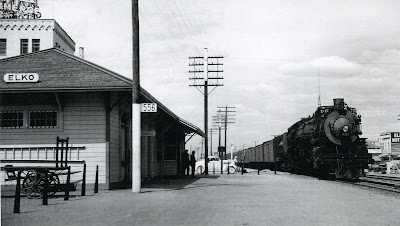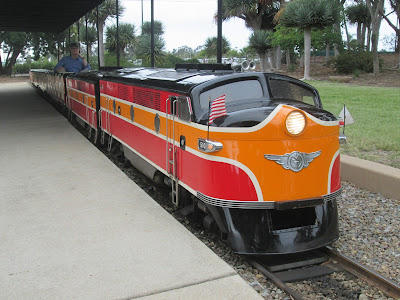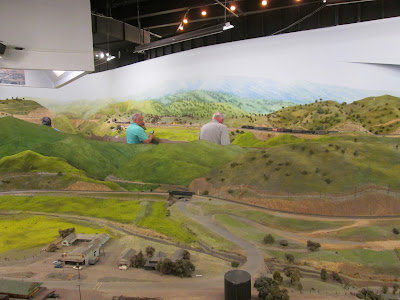January 2017, this has been the last SP-patch unit I have photographed so far. Although I did see one patch up in Pocatello during the 844 trip I couldn't really get close to get a nice view. Since then I haven't seen any patch units. The last patch unit to enter the State of Utah a few days ago was as celebrated as the unpatched units were a few years back... Its a dying breed for sure.
It has been stated that there only certainty in life is "death and taxes." A world of constant change and flux definitely effects the world a railfan sees trackside, as favorite locomotives disappear, flags fall, and traffic patterns ebb and flow in the economic tide.
From a rather young railfan as myself, it seems rather strange to be complaining about changes. The only major American railroad mergers to happen in my lifetime were the UP-CNW-SP mergers, and the formation of BNSF; I was to young to notice any of them. I have never had the experience to go trackside and railfan a Class 1 railroad, only to come back and find that area completely changed due to mergers or abandonment. The only piece of railroad I have seen a train on to later have it go out of service was oddly enough the "Yrigoyen Branch" (officially known as Ramal C16) in the Ferrocarriles Argentinos rail system, a line I witnessed in action but never photographed a train on. The small branch which once extended to Oran before being scaled back to Yrigoyen, was dramatically cut in two by a flash flood on the Rio Colorado on March 6, 2015. However seeing that line is half a world away from where I am now, I have never had the chance to go back and assess the damages. For all I know that bridge has been rebuilt and trains still run the line to this day, yet considering the lack of railfans in rural north-western Argentina, I have found no sources on that line's fate. Furthermore considering that the branch had only one active customer, I find it likely the line was killed by the sudden flood.
Photos of the Ramal C16 bridge fall in Argentina courtesy of Conner Thompson (used with permission). The dramatic collapse suspended operations on the line. It is the only line I have ever seen in action which was later abandoned due to natural disaster. I don't know if it will ever be rebuilt due to the lack of customers on the route.
June 2016, I was pleasantly surprised to catch this ex-CNW unit in the consist of a westbound manifest passing through Tooele, Utah.
I know Schon, myself, and several other local railfans speak ad-nausea about our encounter with SP 343 in April of 2016; but I hope our readers forgive our indulgence on the subject. SP 343 is the ONLY non-patched Southern Pacific unit I have photographed in my life outside of a museum. My brief chase of it from one end of Erda, Utah to another was my last chance to catch a memory of my childhood; when SP painted locomotives dominated the local railfan scene.
UP 6379 (ex-SP 333) was on the outskirts of Pocatello in February 2016 on a waiting train.
UP 6379 (ex-SP 333) was on the outskirts of Pocatello in February 2016 on a waiting train.
Despite this I feel as if the SP, CNW, and DRGW were part of my life. There was a brief era in the early 1990's and 2000's where UP rostered a large fleet of post-merger locomotives that had not yet visited the paint booth. My parents have almost always lived in viewing range of the Lynndyl Subdivision, and I could see the trains in the distance climbing through the valley. UP's fleet was colorful and vibrant, new bright yellow engines decorated in the post 9-11 American Flag paint scheme; trailed by gray and black engines of SP/DRGW heritage. I was oblivious to the histories to the respective railroads, as a kid it seemed as if real life trains were as colorful as what I had seen in children's literature. If Thomas, Toby and Percy dominated my childhood thoughts, so too did their American diesel friends "Rio Grande","Southern Pacific" and his brother "Union Pacific." If it seems like a sweet and somewhat optimistic view, it is an appropriate description of how I felt as a child then.
While on the subject of vanishing locomotive paint schemes; BNSF has taken a far more slow approach to repainting its pre-merger paint schemes. I just have the poor luck that every time I catch one of BNSF's predecessor schemes in action I am either in a moving car or there is some form of obstruction in the way blocking my view. The photos above seem to demonstrate my bad luck! While not nearly as endangered though as the SP units on the UP, BNSF is slowly but surely deadlining and retiring many of these ATSF/BN units.
Utah 5005 in October, 2016; in Provo Yard. This unit along with the other five MK50's are now on the Kyle Railway in Kansas and Colorado.
Speaking of the Kyle Railway is the remaining shock from the loss of Utah Railway's MK50-3's earlier this year. I had not intended to be caught unguarded with a lack of photos of the Utah Railway, like I had been years earlier with the loss of the DRGW units. So as previously recorded in this blog, Josh and I went down to Helper to watch Utah Railway run one of their final coal trains. The snowy mountain scenery was a memorable trip, and I can't think of a more fitting place to watch the MK50-3's in their prime. In spring when rumors came that the MK's would soon be gone I remember sitting trackside until after dusk, to watch a duo of MK's run a Provo-Ogden freight through Salt Lake City.
As the MK50-3's left the Utah Railway, I spoke of my belief the Utah Railway could survive in a post-coal traffic market. I based my thoughts off watching the nearby Salt Lake Garfield and Western shortline revitalize itself and grow its traffic base despite a limited reach and a lack of resources. Many railroads could survive as a local traffic handler, and it had seemed the Utah Railway was prepared to do the same. In a way my original blog post on the topic was also deflecting some of the strange rumors coming from railfans from far out of state, many of whom were taking random guesses to the fate of the Utah Railway despite having no firsthand experience observing it.
January 2017, a Utah Railway train works in the "Small Arms Industrial" park.
I wish I had the same optimistic attitude now. Rumors of great changes began to fly about the Utah Railway, but now they were in the closed circle of Utah railfans. Rumor has always been a part of the railfan community, and most rumors must be dismissed since plans for the future are always up in the air. But then in an embarrassing moment that seemed to validate the rumors, a Provo-Ogden train powered by two aging SD50S units died on the mainline shortly after the MK50's left the property. Since then the rails of Soldier Summit are now rarely graced by Utah Railway's presence. By summer Utah Railway retired two more units, this time a pair of the SD50S units; leaving only three of the aging units on property. Rumors suggest that Utah will receive ex-Norfolk Southern GP units to replace the two SD50S units; but the rumors have yet to materialize.Darker rumors put an ominous date, suggesting the Utah Railway might vanish on the eve of the Golden Spike celebration with BNSF taking over their remaining traffic. Only a year ago I felt assured Utah Railway would be a staple in the local railfan scene, only months ago I figured it could survive on what little luck it had left, and now I am not so sure. As I mentioned I have yet to see any railroad flag fall in my lifetime, so the potential that Utah Railway now rests on the brink has me unsettled. It is a strange prospect indeed, however it is another sign of my youth as surely many older railfans can tout their memories of the fall of the great railroads of their age too. Even if Utah Railway manages to limp along, it is clear the era of its "Cowboys on the Hill" hauling heavy coal over the summit in some of the world's most abused locomotives, is clearly at an end.
A few of the Arrowedges I have seen over the last few months, including the a first and second generation version of the container.
Yet in a brighter thought, the future of railroading has many opportunities which excite me. Where it once seemed SP patch units were common on select trains, now I have begun to discover the same sensation with Union Pacific's newest experiment; the Arrowedge. These intermodal containers, chopped and shaped into a wedge are the newest advance in fuel saving technology for railroads. In the last month and a half I have seen three trains fitted with various Arrowedge models, and photos on Facebook suggest dozens more have passed through the area without my notice. Often leading the trains are the new Tier 4 units. The GE T4 is so abundant I see it now on a regular basis. I have yet to spot EMD's T4 units, but from the photos I have seen of them their high roofs and chiseled cabs remind me a bit of those MK50-3's which have wandered away from the roost...
A new T4 locomotive leads an intermodal freight through the Tintic Junction last November. The large antenna behind it is for PTC, another change coming online which is affecting how railroads are operated across the nation.
Monorails like the "hyperloop" are a form of innovative rail transportation. Seen here is the "Monorail Red" gliding above guests at the Disneyland Resort in Anaheim, California. Despite the many promising aspects for rail commuting technology the monorail offered, it never gained much popularity in America beyond tourist heavy areas such as the Disney Parks, Las Vegas, and World Fairs such as the one in Seattle. This treatment of the concept as "an amusement park ride", the lack of a standardized gauge system across different Monorail manufactures (or lack of standardized parts), along with the heavy anti-commuter rail pushes made by automotive companies such as General Motors in the 1950's meant that the monorail never had much chance to catch on. The faster maglev monorail concept sees limited use due to the cost of construction (with no operating example in North America at all). The monorail though due to its brilliant elimination of grade crossing has caught on in congested cities in Asia. If the new "hyperloop" concept proves more successful has yet to be seen.
If Futurama like speed tubes between cities are a bit to far away from our blog's subject about railroads, I am also excited for future prospects in rail preservation for our historical equipment. In only a few years we will soon see a Big Boy rumbling down Union Pacific rails, taking back its rightful throne as king of Sherman Hill. Locally, it is only a matter of months (if not weeks) until UP 1011 a 1940's vintage EMD NW2 returns to service at Heber; joining the recently acquired GP on property as an accurate collection of the vintage early diesel age of the Union Pacific, and clearing up shop space for the neighboring UP 618 steam engine restoration in the same shop.
July 2015, UP 4012 at rest at the Steamtown Museum in Scranton, PA. Hopefully in a few years its sister engine UP 4014 will be roaring down the tracks of the American West, bringing back what is arguably the steam age's most famous icon.
With changes abounding it is hopeful to look at the positive things we will see in the coming years. With that it would be remiss to omit the exciting prospects the 150th anniversary of the Golden Spike will bring in its 2019 celebration to Utah. Our local area will briefly enjoy the focus of the railfan community, as conventions and celebrations are held to celebrate the joining of the nation in the deserts of northern Utah so many years ago. As I look at all the changes that have occurred in the past few years I yearn to see the good that comes out it all too!
-Jacob Lyman





















































